Addressing issues surrounding motorhome night driving.
Night driving is a topic that is often raised around the campfire by fellow RVers. Much of the discussion often revolves around the efficiency of some headlight designs used in class A coaches. Perhaps some of the thoughts are driven by the radical front end-designs of these vehicles. But, are they really different from today’s stylish automotive creations? Probably not. The same recessed bulbs beneath a glass-like cover conforms to the body contour mirroring a similar image.
So, why do some class A owners feel that their coach’s headlight assemblies are not as bright, or efficient, as those of their daily driver? There may be several contributing factors that lead to this perceived difference. Let’s look at what some may be.
Night Driving Challenges
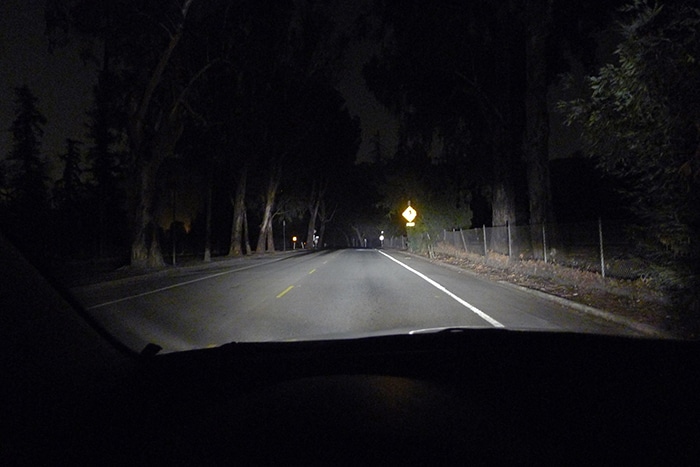
Increased angle of light source to eye. The increased elevation of the class A driver’s eye to the lower elevation of the headlamp position may not reflect the light back in the same manner that we are accustom to in similar scenarios.
Increased interior cab illumination. Unlike a car dashboard, the class A driver’s environment exposes the operator to much more ambient interior light. This tends to reduce the forward viewing light intensity.
Rear view mirror(s) reflected light. Class A RVs are equipped with extremely large multi-surfaced outside mirrors. These highly reflective components appear to amplify any light source that is present behind or beside the vehicle. They are not equipped with the auto dimming feature found on many automobiles and cannot be re-positioned quickly enough to avoid a blinding flash so often experienced in like situations.
Following traffic headlights can flood the cab with lighting causing a reduction in viewing ahead.
Improper headlight alignment. Headlights that are not in correct alignment can blind approaching drivers or waste needed illumination.
Vehicle level. The RV must be at the correct ride height for travel with the same loading balance to assure headlamp alignment conforms with the vehicle specifications.
The aging eye. Well, like it or not, many RVers are getting older. This aging over the years usually comes with a gradual deterioration of eyesight efficiency. This can increase the aforementioned issues.
Night Driving Helpers
So, how can the visual experience of night driving of an RV be improved? Well, the reduction of any excess cockpit lighting is probably a good start. Here are some of the items that are worth addressing.
Clean windows. Be sure the windshield is cleaned thoroughly both inside and out. Haze on the glass can be invisible during some daytime driving, but can make night driving very difficult. The inside of the windows in motorhomes tend to form a hazy film from cooking, etc. Do not forget to also clean the side windows too. Ambient side lighting can cause a less transparent window to glow slightly.
Turn on the lights. Seems basic, right? Well, most class A RVs do not come equipped with auto night headlight activation like many of today’s autos. Combine this with those vehicles featuring auto-daytime-running-lights. This can emulate the full running lights, however at a far lower level of light than the normal intensity. This can result in a dangerous scenario.
GPS. Program the GPS screen to automatically dim the display at dusk and during nighttime. In addition, keep an item suitable to cover the entire screen if required. A cloth or towel may do the trick. Some icons or portions of the guidance display can emit bright bursts even while in night mode. You might also consider turning the GPS display off during night travel to totally negate the lighting distraction.
Dash lights. Adjust the intensity of the dash lighting to the lowest point while still being able to read the required data.
Mirrors. Be sure the mirrors are clean. Haze or water stains tend to cause a glow from any light present both behind and from the side. Slight misalignment of the outside mirrors at night can help reduce the glare from headlights of vehicles behind. Unlike daytime driving, the awareness of other vehicles nearby is easy to discern by the headlamp illumination.
Sun visors. The lowering of sun visors can reduce the viewing size of the RV’s oversized windshield. This can help in the reduction of excess lighting exposure to the operator.
Sunset travel. If planning nighttime travel, try to avoid driving into the late day setting sun. Exposure to extreme bright environments may temporarily reduce night vision. This solar timeframe may be a great time to plan a stop for dinner and resume travel at dusk.
So, with all the possible issues associated with nighttime driving of an RV, why would anyone bother? After all, RVing is supposed to be a relaxing recreation, not an endurance!
Advantages of Night Driving
But, there are some advantages to traveling in your RV at night. Let’s look at what some might be.
Reduced Stress. Driving at night can be far less stressful for many as there is little traffic to deal with.
Reduced travel time. Driving time can be greatly reduced at night as there is less traffic, no road construction delays, or similar on-the-road interruptions.
Reduced fuel consumption. Steady speed without traffic congestion generally results in better fuel economy. Additionally, in hot climates, the need for less air conditioning while traveling can save more of your fuel dollars.
More time at your destination. Traveling into the night can get you to your destination earlier on the arrival day. This can allow you more time to enjoy your favorite vacation spot.
Of course there are some possible disadvantages. A deer strike or like wildlife encounter is much more common at night. While there is always a risk of such an event day or night, especially in rural areas, the chances increase greatly after dark. Experiencing a flat tire, or like breakdown, at night can present other issues such as not being seen by other drivers. Accessing needed help or service becomes far more challenging particularly late in the evening.
So, whether you travel in your RV in the light of day, or in the shadows of night, drive to arrive safely. See you in the campground.
Peter Mercer – Dealing With RV Night Driving

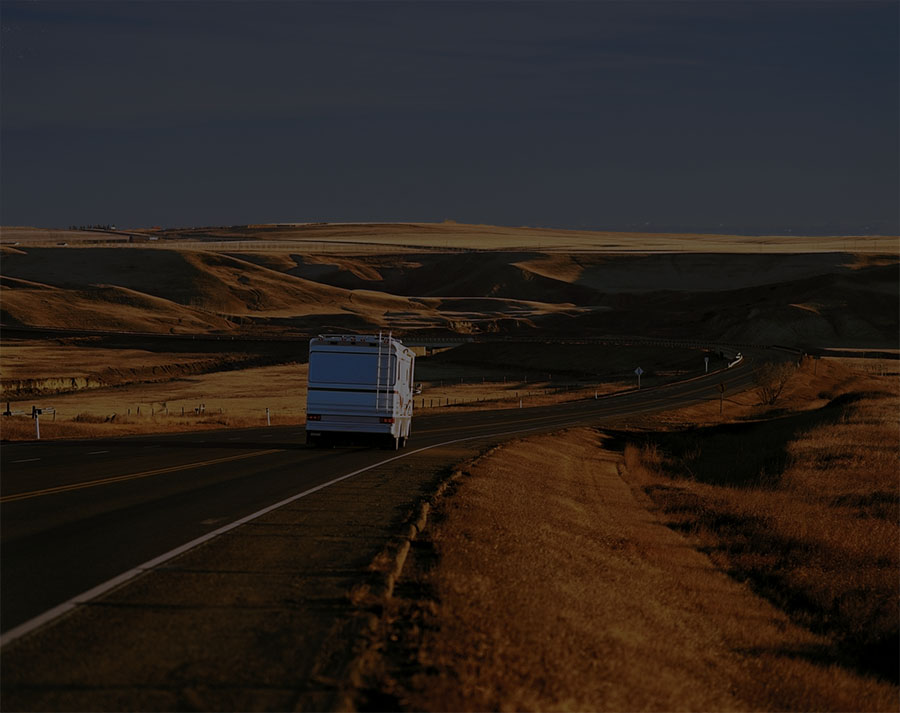
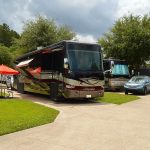
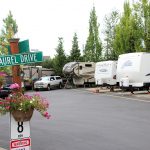

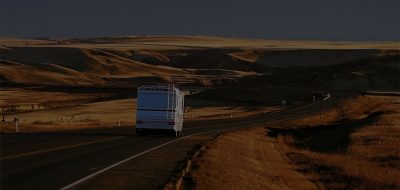
Peter Mercer
Thank you for your comment. I am glad you found the article of interest. Your positive feedback is appreciated.
Anonymous
Nice article. I worked 30 years of night shifts, and also served as an emergency response driving instructor. Trying to get others to modify their night driving behaviors was difficult at times.
Every point made in this article is well worth the read. Thanks for putting this valuable information out there for everyone to see.